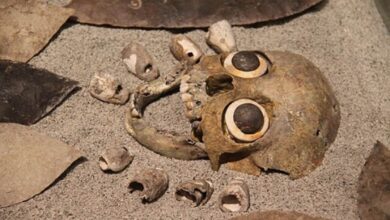Coven in the 21st century: beyond witchcraft
Listen this article
A clan of sorcerers in Cúcuta revealed us some of their secrets

Witchcraft has always been a controversial subject. In LatinAmerican Post, we talked with three members of a pagan coven, who told us about their way of seeing the world and belie some myths. At the request of the persons interviewed, their identities are reserved.
Leer en español: Aquelarre en el siglo XXI: más allá de la brujería
LatinAmerican Post: What is paganism, is it related to Wicca?
Purple cat: It is the belief in many deities, not all pagans are sorcerers and not all sorcerers are Wicca. This is one of the best known, there are many paths, such as druids or encirclement magic.
LP: What is the relationship with nature?
PC: We understand that nature is alive, it is everything. Every living being has a spirit, feels. There are guardians or fairies who protect it. It is a deeper connection with the whole.
LP: What is the tradition that the clan follows and what is it about?
The Wise: It is the crossing of roads or encirclement magic. We take care of the secret through oral transmission, being accepted in a space and being able to learn from a teacher, that is the pillar of our clan. One of our principles is to transmit the fire for those who come. There is evidence to make sure if someone is worthy of that knowledge. I can not talk about white or black magic within our beliefs.
It is a magical art that should be practiced, not a religion. The philosophical tools are given and each one builds its vision. To be part of the coven you must have a spiritual profile and be fit for what we teach.
PC: We handle three traditions: Scottish, African and Italian with Greco-Roman mixture. Each one allows us to work different spells.
Read also: Transgender artists make headway in Latin American culture
LP: What is it like to be part of the clan?
PC: We are like a family, we not only practice witchcraft but we strengthen the bond. In a group, it has more advantages because one shares perceptions and knowledge; you understand that they are not just the product of your thoughts, sometimes they consult with some guessing oracle and it is confirmed. Some are better at certain things, although we all learn everything. When it comes to a spirit that has a more developed vision it can see certain things that others may not. It is complicated because of daily commitments, but one saves times to do it.
Fire Lion: I have enriched myself spiritually, when you have the ability to feel things but there is no reason, you think you are crazy. When we get here, we understand things, study and practice a lot; if we do something wrong, we can hurt ourselves or others. This is a double life like Sabrina. We learn to face certain fears.
LP: What are your main festivities?
PC: The most important one is Hallowmas or Hallowen, it's the new year, a season with a lot of power. Energetically a portal is opened for many entities to pass. We give light to dead relatives, we do cleansing rituals, prosperity spells, a dinner, we celebrate. They are marked by the seasons, like Beltane on May 2: the trees begin to bloom, the sun is really bright, it is the end of the dark season (November and December). There are others, which mark solstices.
LP: What are the most common myths that you face?
PC: People do not believe or are afraid of us, that we play with the devil, but this is a figure created by Christianity. Animal sacrifices or that witchcraft is focused on evil. Magic is neutral, you decide how to use it. If you have an apple you decide if you give it to someone to feed or poison it. There are people who summon things and do not know how to do it or do it with disrespect and they do go crazy. You can not summon the dead out of nothing.
LP: What is witchcraft about?
PC: It is communication with the universe, understanding that there is one and at the same time you are a universe of cells in constant chaos. It allows you to transform many things in your life and that of others. It provides communication with the energies. It's not just taking the plants and doing the spell. It is understanding everything, who you are, what you do, what you are here for, the planets, what is below the earth, that other worlds exist. It is the ability to fly between the two worlds, to understand life and the mysteries of death.
LP: Let's talk about the deities
PC: Meditation is the best way to have communication with them, they are everywhere, from any act of thanking. They have many faces and many energies. If you promise something and do not keep it, they are there to remember it, they have a duality. I can not talk more about it.
TW: They are related to nature. We have a direct connection with the forces, but not in devotion but in accompaniment, we are inside or in part of them and vice versa.
LP: What tools do you use?
TW: Everything we find in the natural world, the most important thing is that we are our own tool. Plants, earth, rocks, water, the bone of an animal, everything that comes out of nature and is processed like an oil.
LatinAmerican Post | Greece Algiers
Translated from "Aquelarre en el siglo XXI: más allá de la brujería"





